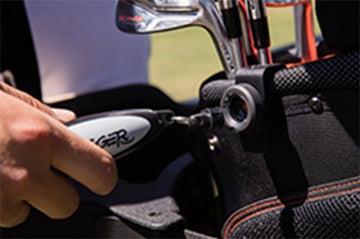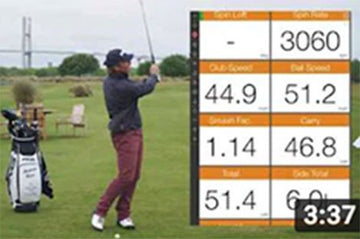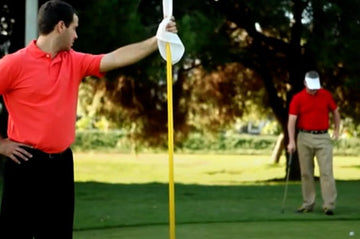- Slow it down: Most golfers who are new to the game swing too fast. You have to accelerate through the ball in order to make solid contact with the ball. Whether it’s putting, chipping, from the fairway, or off the tee, acceleration is key. When you slow down your backswing, it allows for acceleration through the shot, giving you better distance and control.
- Lighter grip pressure: Most new golfers grip their clubs way too tight. When you “throttle” the club, the hands loosen at impact and provide inconsistent strikes. A lighter grip pressure allows the hands to tighten at impact and provide better ball striking. The best way to work on grip pressure is with a swing training aid like this one from Frogger Golf.
- Distance control on putts: When you get on the green, eliminating 3 putts is key. A lot of new golfers struggle with learning how to “lag” putts (leaving the ball close to the hole). To practice distance control, you need to first establish a consistent stroke. Use a great training aid like this one to lock in your unique putter swing and improve distance control on every putt.
Keys to the game - Breaking 100, 90, 80
It’s funny, despite one stroke separating shooting 80 and 79, almost every golfer will agree with you that there’s a huge difference between the two scores. The same goes with 100 and 99, 90 and 89, etc. These benchmark numbers are often how golfers judge their games, and you’ll always hear people say something along the lines of “finally broke 90 for the first time!” As a single digit handicapper, a lot of my friends ask me how they can break through that threshold and finally shoot the lower scores they’ve been after. We wanted to offer up a few pieces of advice for golfers at different skill levels to hit those benchmark numbers.
Breaking 100:
If you’re new to the game, welcome! We’re happy to have you along for the ride. We know golf can be crazy frustrating, but with these few small tips you can have a respectable round and start to shoot in the 90s.




























